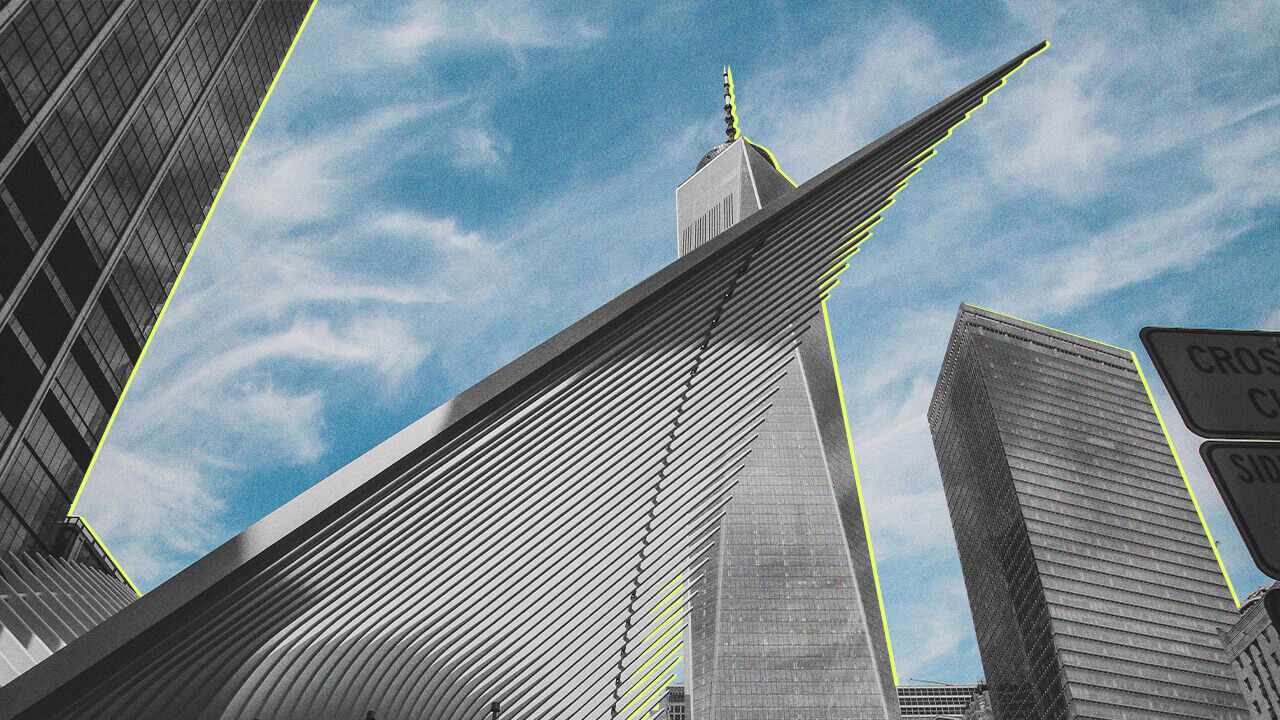
Employee well-being remains low post-pandemic, with only 40% reporting a good sense of well-being, down from 75% pre-COVID.
Bryan Berthold of Cushman & Wakefield says community and connection are key drivers for positive workplace experiences.
Despite data highlighting the issue, companies are hesitant to invest in necessary workplace changes to boost well-being, he says.

RTO has taken on a largely negative connotation in the mainstream discourse, with employers being questioned (and sometimes villainized!) for encouraging employees to return to IRL work. But years after the height of the pandemic, employee well-being is showing little sign of recovery — and workplace leaders are raising red flags. The modern office is about more than just accountability and productivity. It’s about workplace experience and wellness that only human-to-human collaboration can solve.
We spoke to Bryan Berthold, Global Lead for Workplace Experience at Cushman & Wakefield, about why employee wellness scores have plummeted since COVID, and remain low today.
Stats raise alarm bells: “Pre-COVID, about three-quarters of people said they had a good degree of well-being,” Berthold says. “That immediately started to dip when COVID hit—down to 55%, then to 44%. Now, it’s pretty much flatlined around 40% over the last three years. We’re not seeing an improvement, and 60% of people not having a good sense of well-being is a cause for concern.”
Craving connection: Among the key drivers of a positive experience? Community and connection. “The top reasons people will come into the office are for collaboration, to build relationships, to connect with the company culture,” Berthold says. “We do see a remarkable difference in people having a better work-life balance when they are coming in more—separating home and work, and avoiding the work-life blur when you’re remote.”
Berthold’s team at Cushman & Wakefield works globally with clients to diagnose and improve employee experiences. Their tool, Experience per Square Foot, quantifies how office environments perform on factors like design, technology, location, and cultural alignment.

Beyond the cubicle: One key issue, he says, is the gap between what employees need from the office and what’s currently offered. “Only about 60% of people feel the office delivers on its promise today,” he says. “That’s a dilemma. That legacy space—focused on your desk, your cube, your office. All the reasons people gave for coming in? It’s not to sit by themselves. It’s to be with their team, with people, and to learn from others. We’ve got a lot of work to do to invest and make the workplace more of a place where people can thrive to meet that new purpose.”
Younger workers missing out: This disconnect is especially damaging to younger employees, who are experiencing significantly lower well-being than their older colleagues. According to Berthold, well-being scores hover around 30–33% for Gen Z and millennials, compared to 53% for baby boomers. “The younger ones are struggling more,” he says. “Some of that has to do with wanting to come into the office to be mentored, to build relationships, to have a sense of belonging, to get exposed to the culture.”
Acting on the data: Despite mountains of data, Berthold says many companies are dragging their feet to make changes. “Everyone sees the data, but I’m not seeing it prioritized—from a gathering standpoint, from a process standpoint, from anointing people or making investments,” he says. “I’m not seeing the capital and operational budgets put into place to manage this new future state. I can lead the horse to water with all the data showcasing what’s going on, but eventually somebody’s got to make a call to start taking action.”
Employee well-being remains low post-pandemic, with only 40% reporting a good sense of well-being, down from 75% pre-COVID.
Bryan Berthold of Cushman & Wakefield says community and connection are key drivers for positive workplace experiences.
Despite data highlighting the issue, companies are hesitant to invest in necessary workplace changes to boost well-being, he says.

Cushman & Wakefield

RTO has taken on a largely negative connotation in the mainstream discourse, with employers being questioned (and sometimes villainized!) for encouraging employees to return to IRL work. But years after the height of the pandemic, employee well-being is showing little sign of recovery — and workplace leaders are raising red flags. The modern office is about more than just accountability and productivity. It’s about workplace experience and wellness that only human-to-human collaboration can solve.
We spoke to Bryan Berthold, Global Lead for Workplace Experience at Cushman & Wakefield, about why employee wellness scores have plummeted since COVID, and remain low today.
Stats raise alarm bells: “Pre-COVID, about three-quarters of people said they had a good degree of well-being,” Berthold says. “That immediately started to dip when COVID hit—down to 55%, then to 44%. Now, it’s pretty much flatlined around 40% over the last three years. We’re not seeing an improvement, and 60% of people not having a good sense of well-being is a cause for concern.”
Craving connection: Among the key drivers of a positive experience? Community and connection. “The top reasons people will come into the office are for collaboration, to build relationships, to connect with the company culture,” Berthold says. “We do see a remarkable difference in people having a better work-life balance when they are coming in more—separating home and work, and avoiding the work-life blur when you’re remote.”
Berthold’s team at Cushman & Wakefield works globally with clients to diagnose and improve employee experiences. Their tool, Experience per Square Foot, quantifies how office environments perform on factors like design, technology, location, and cultural alignment.

Cushman & Wakefield

Beyond the cubicle: One key issue, he says, is the gap between what employees need from the office and what’s currently offered. “Only about 60% of people feel the office delivers on its promise today,” he says. “That’s a dilemma. That legacy space—focused on your desk, your cube, your office. All the reasons people gave for coming in? It’s not to sit by themselves. It’s to be with their team, with people, and to learn from others. We’ve got a lot of work to do to invest and make the workplace more of a place where people can thrive to meet that new purpose.”
Younger workers missing out: This disconnect is especially damaging to younger employees, who are experiencing significantly lower well-being than their older colleagues. According to Berthold, well-being scores hover around 30–33% for Gen Z and millennials, compared to 53% for baby boomers. “The younger ones are struggling more,” he says. “Some of that has to do with wanting to come into the office to be mentored, to build relationships, to have a sense of belonging, to get exposed to the culture.”
Acting on the data: Despite mountains of data, Berthold says many companies are dragging their feet to make changes. “Everyone sees the data, but I’m not seeing it prioritized—from a gathering standpoint, from a process standpoint, from anointing people or making investments,” he says. “I’m not seeing the capital and operational budgets put into place to manage this new future state. I can lead the horse to water with all the data showcasing what’s going on, but eventually somebody’s got to make a call to start taking action.”
© 2025 Bamboo HR LLC. All Rights Reserved. BambooHR® is a registered trademark of Bamboo HR LLC